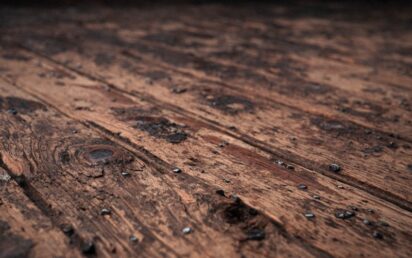Learning to work with wood and woodworking tools is one of the most rewarding aspects of experimenting with DIY projects at home. As time goes by and you attempt a variety of different wood-based projects you will be able to build on your skills and develop improved and more sophisticated carpentry skills. Working with wood can include the use of drills, nails and screws but there are many woodworking projects that can be completed with the use of wood adhesives like No More Nails and epoxy glues.
No DIY enthusiast gets it right all the time, though, and even with the most meticulous application, errors happen (and quite often) when applying glues. In this case, with some care and effort, you should be able to remove the excess or incorrect application, clean the area and re-apply the glue. Following these simple, easy steps will help you to deal with spills and mistakes that sometimes happen while working with wood adhesives.
For homeowners that are thinking about selling their home and looking for the best ways to make your home more attractive to buyers, getting all your wooden surfaces in tip-top shape is a great idea. This clean-up procedure can ensure that your home looks lovingly maintained and restored for prospective buyers.
Steps for removing glue from wood
What you will need:
- Tools for scraping ( e.g. credit card, spatula or sandpaper)
- Cotton buds or cloths
- Vinegar or acetone/nail polish remover
- Wood varnish for restoring the cleaned area if needed
Step-by-step instructions:
- Carefully scrape off the glue without using a knife. Use the hard edge of a credit card instead.
- Next, dissolve the glue with a cotton bud or cloth soaked in a solvent like acetone nail polish remover or vinegar diluted in water. For untreated wood, acetone is the best option while vinegar is better for varnished wood. Use the solvent to remove the glue as gently as possible.
- To recondition the wood you can apply a coat of varnish but this step is not necessary if you haven’t damaged the wood or created any unsightly areas.
A true love of working with wood grows and develops the more you tackle different and more complex projects. One of the most satisfying aspects of DIY woodworking is being able to use and admire the projects you complete. If you don’t own your own home yet and you want to invest in one so that each of your DIY projects can be appreciated for years to come, check out these ideas for how you can make your homeownership dreams come true.
So remember, when it comes to removing glue from all your wooden surfaces and projects, there is a simple solution that is tried and trusted and works on most surfaces without much effort. The simple tips on this page can be referred to over and over, each time you need to do a clean up.
Working with wood can be a rewarding learning experience which DIY enthusiasts can build on over time but even experienced craftsmen can make mistakes when working with glues. Removing glue from wooden surfaces doesn’t have to be an expensive or time-consuming exercise. By following a few easy steps you can easily clean up spills and mistakes during and after working with wood glues and make sure that all the wood in your home is in the best condition possible should you want to sell your house. By following the three easy steps for glue clean ups as noted above you should be able to easily take care of spills and mistakes.


